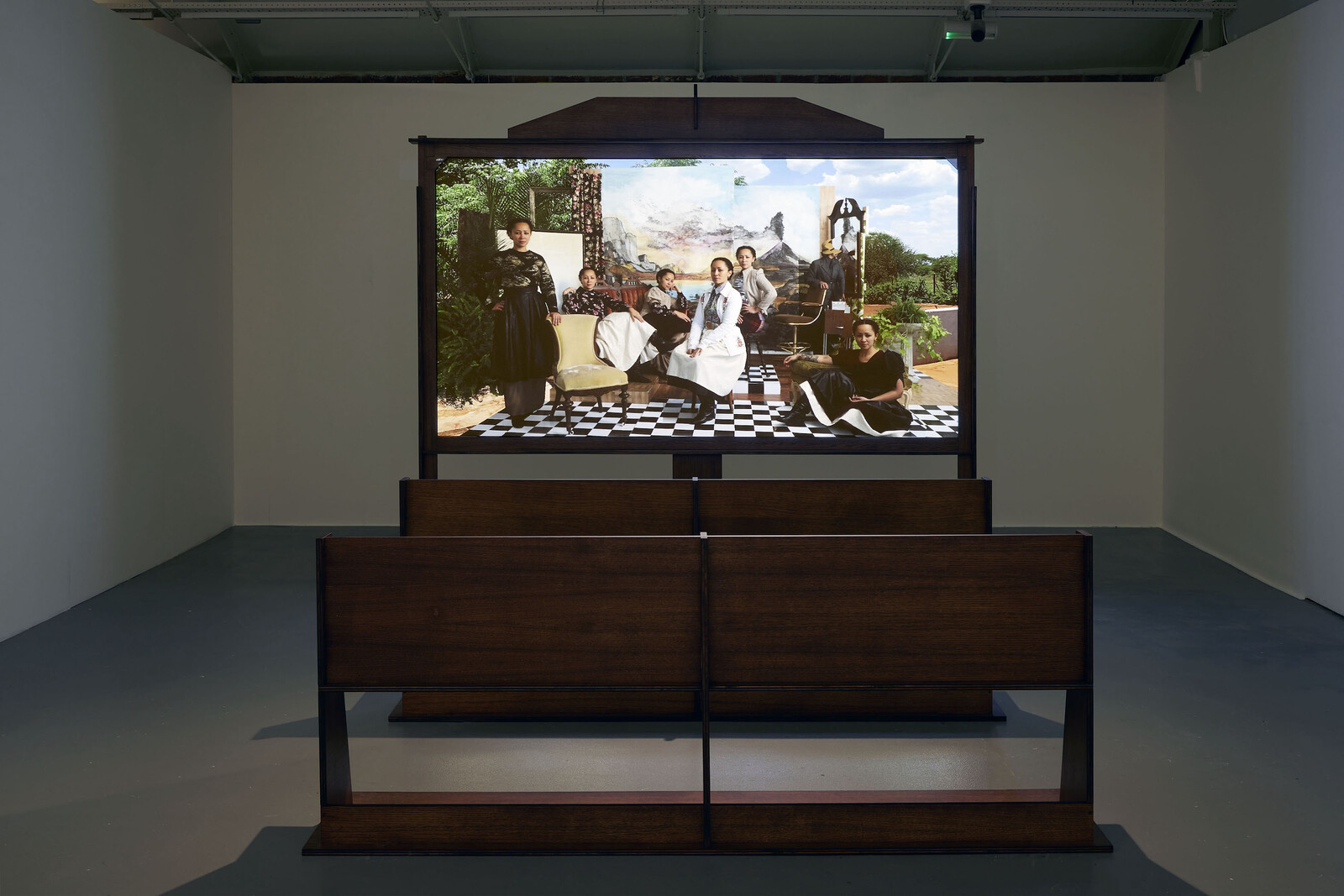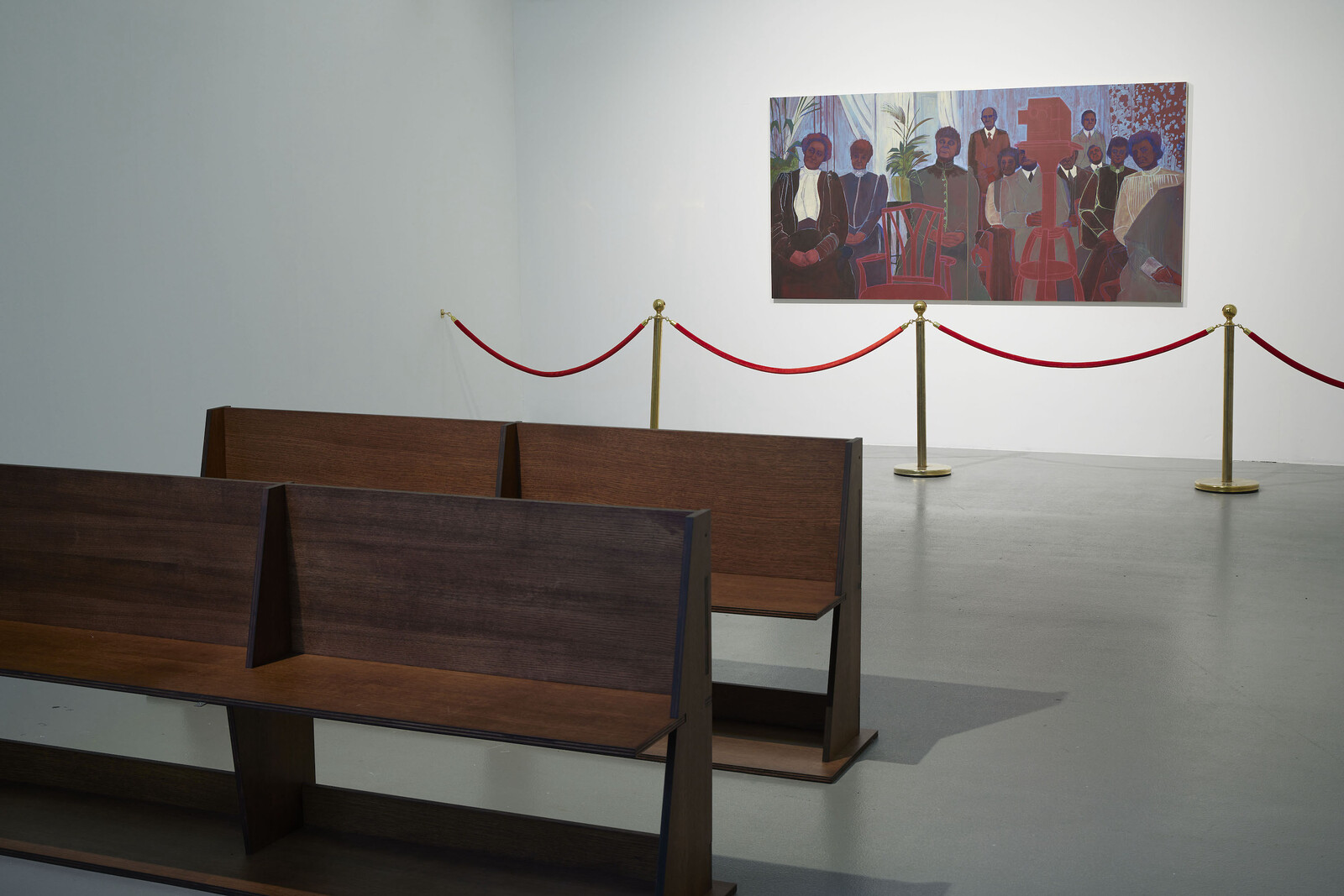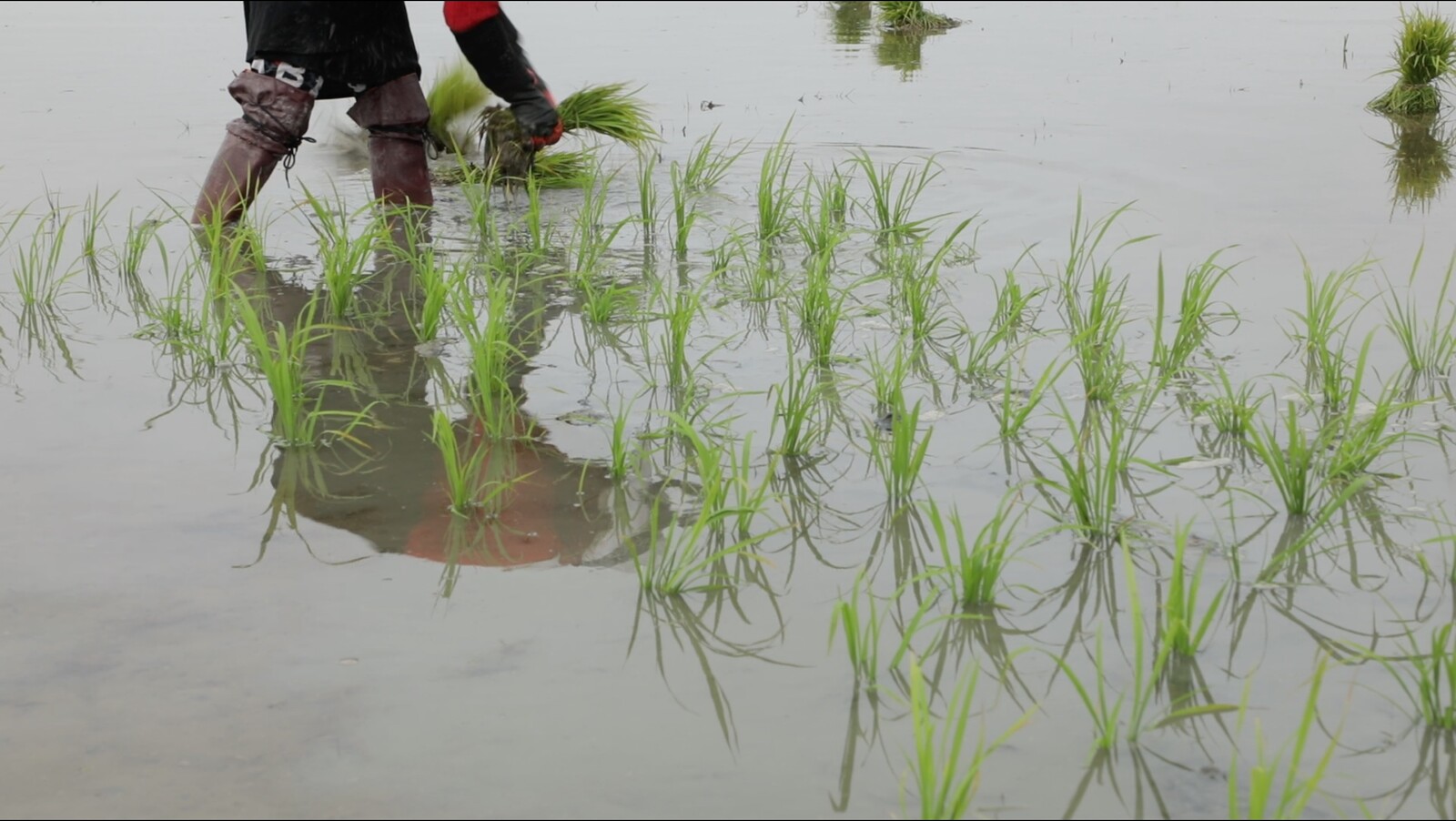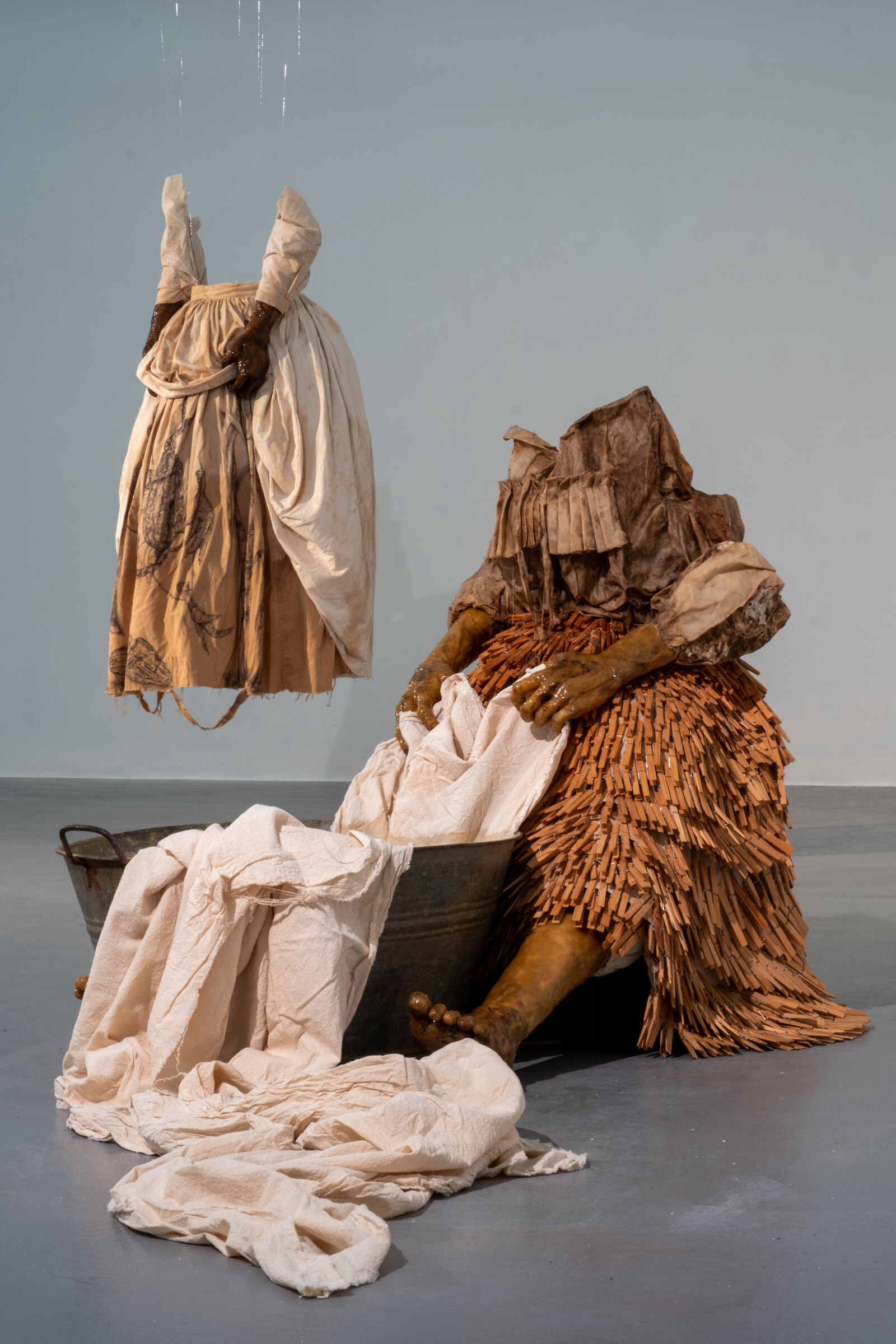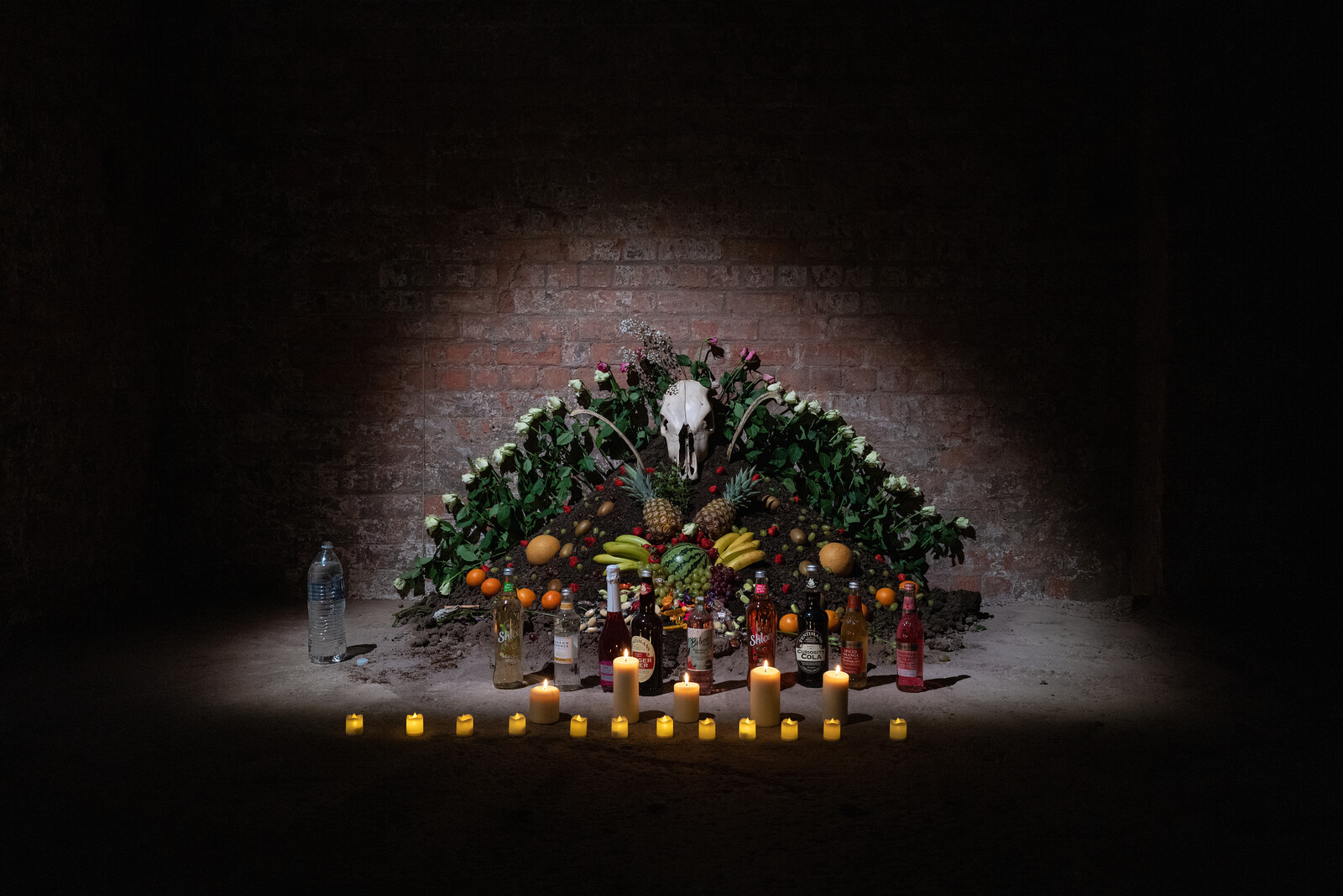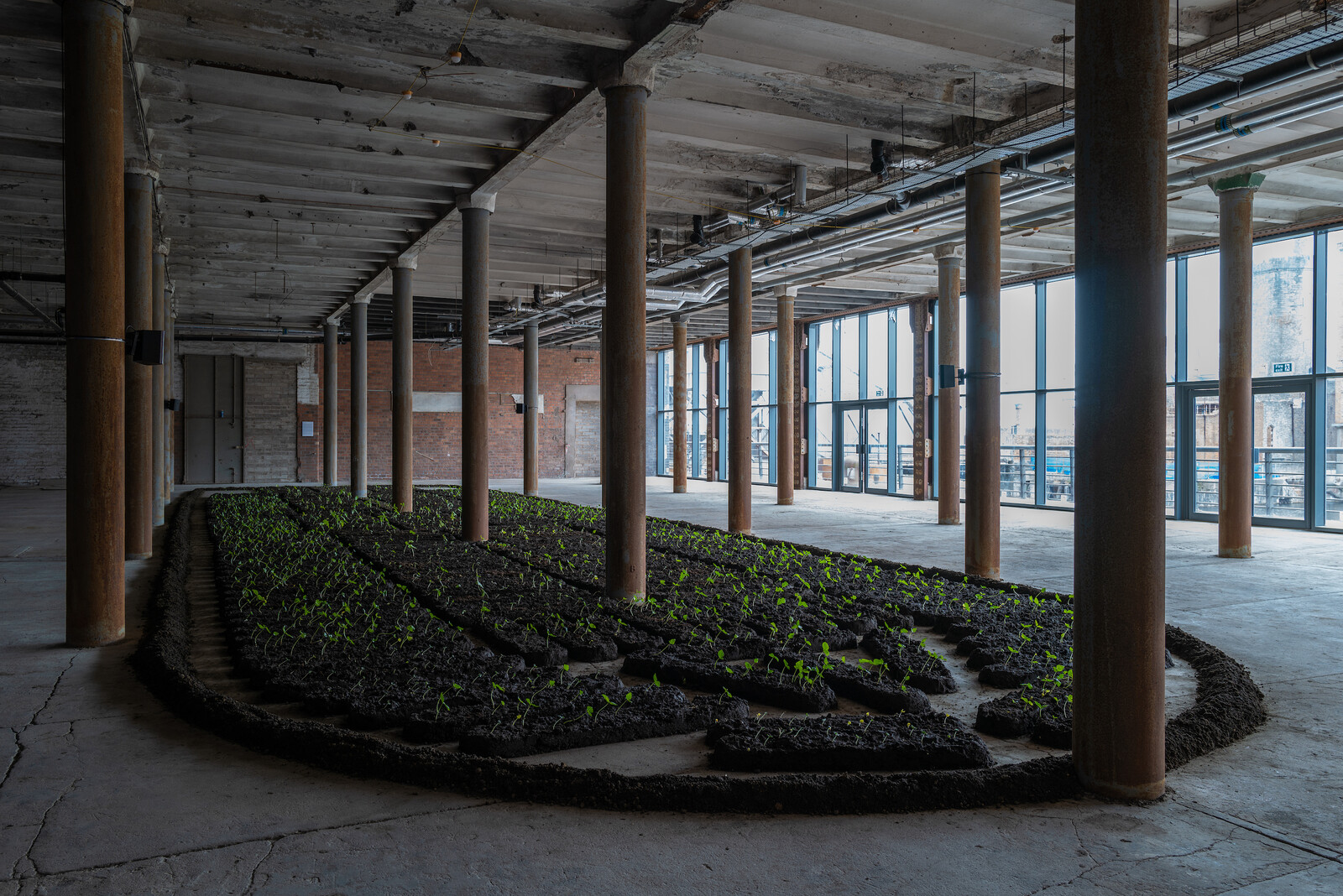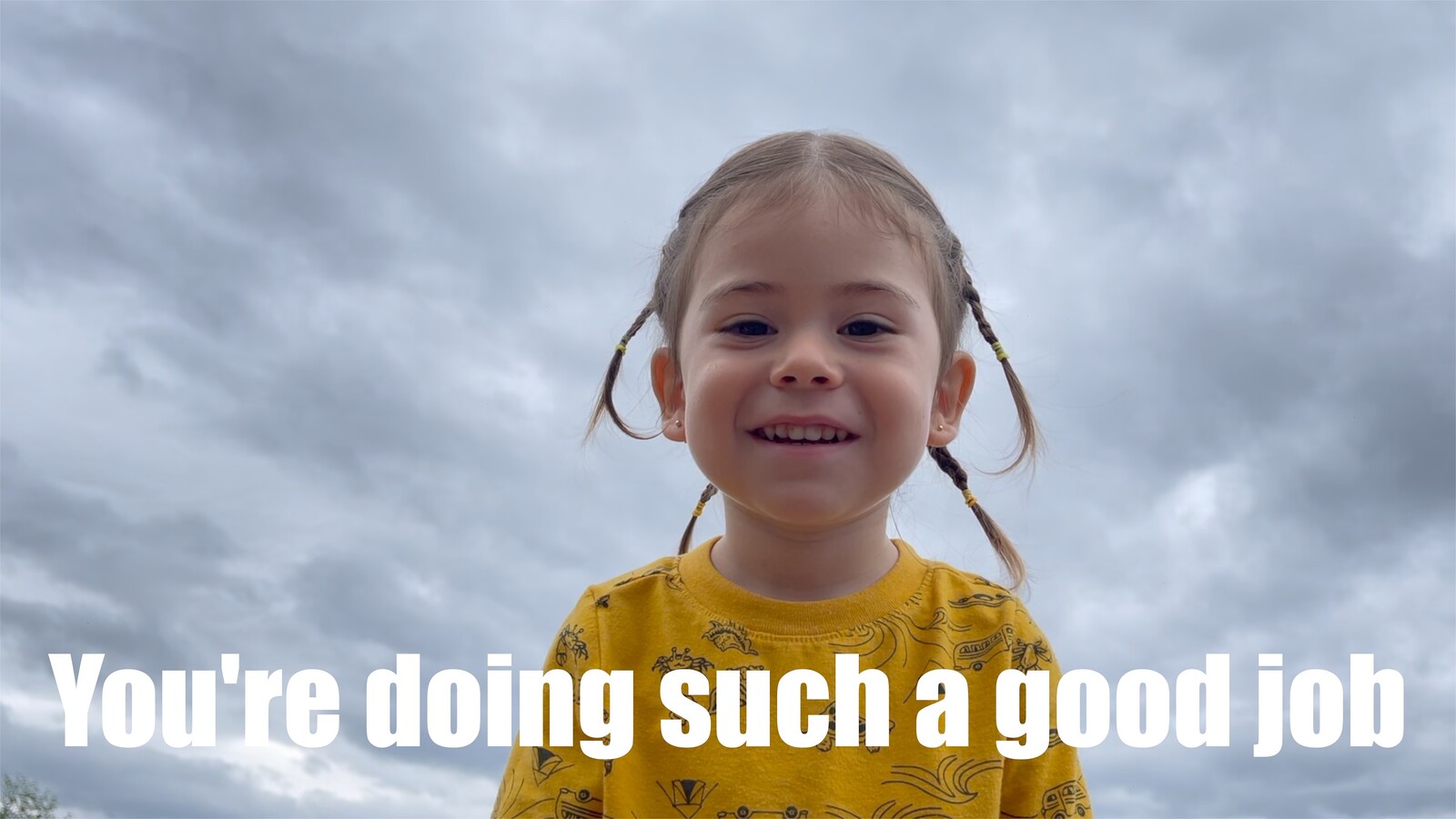Given Liverpool’s role as a major hub for the slave trade during the eighteenth and early nineteenth centuries, it’s surprising that past editions of the city’s biennial have not engaged more directly with this subject.1 The legacy of slavery haunts the port city: it can be seen in the many warehouses by the docks, the streets named after slave traders, and the monuments addressing it. This year’s biennial dives fully into that history, guided by Cape Town-based curator Khanyisile Mbongwa’s approach, rooted in remembrance but also in the seeking of potential avenues to healing. “uMoya: The Sacred Return of Lost Things” featured over thirty artists finding ways to engage with a city whose links to slavery and its legacies are inextricable, in a way that manages to look to the future as well as the past.
In the Tobacco Warehouse, Albert Ibokwe Khoza’s multimedia installation and performance piece The Black Circus of the Republic of Bantu (2022) goes back to questions of bodily autonomy, mining the histories of human zoos and exhibitions by examining their performance practice. As a South African artist whose work is sometimes staged in the west, they question the relationship between themselves and their audience, the legacy from which exhibition methodologies stem, and whether there is scope for reclamation. By challenging the perspective and position of the viewership, the work inserts itself into the recent conversations around repatriation and restitution which have brought into question the role of cultural institutions in the west as custodians of art objects, ostensibly to enable wider access.2 In this context, staging the biennial at this time, under the banner of “The Sacred Return of Lost Things,” begs a question: what does it mean to exhibit art largely from the Global South in a city so closely associated with the displacement of human beings from the same locations?
In Shannon Alonzo’s spectral sculptures at Tate Liverpool, what is absent is as salient as what is shown. The body in Washerwoman (2018) is largely invisible except for a pair of arms and legs. The woman’s dress, made of cotton, clothing pegs and other objects, sits around the impression of her absent body. Inspired by a photograph of an anonymous woman taken in Jamaica around 1890 by JW Cleary, the work addresses the continued erasure of the histories and cultures of Caribbean people and how it severs connections between the diaspora. Pamela Phatsimo Sunstrum also speaks to notions of belonging and attempts at creating a collective self. Her installation Mumbo Jumbo and The Committee (2022) consists of a looping animation placed opposite a painting. Sat on the pews facing the animation, the viewer takes the position of the white eighteenth-century men and women in the painting. Aligning biennial visitors with these onlookers to slavery makes a striking visual link to the spectacles made of the bodies of people of African, Asian, and Indigenous descent. These works engage directly with the complications of how art from outside the west can be read when shown within it, particularly in a city that had a major role in the pursuits of expansion and domination.
It was hard to miss the presence of works that explored pre- and post-colonial practices centered around food. The sickly-sweet stench let off by the fruits and vegetables in Edgar Calel’s Ru k’ox k’ob’el jun ojer etemab’el [The Echo of an Ancient Form of Knowledge] (2021) permeated beyond the gallery walls. Like the food in Khoza’s installation, the work was an offering to his ancestors, allowing a space for Indigenous forms of knowledge dissemination to coexist alongside museological emphasis on preservation, curation, and display. Sepideh Rahaa also looked to her family, who have passed down knowledge of rice cultivation through generations in Mazandaran, Iran. Her multi-channel film installation Songs to Earth, Songs to Seeds (2022) narrated this process, highlighting how this one plant connects a network of geographies and time periods. Also important to the film was the gendered division of labor and the crucial role that women play at various stages of production. Melodic songs, containing stories of their struggles and sung in the Indigenous Northern Iranian language Mazani, play over scenes of the women working in the paddies.
At the back of the gallery was a small effigy, Verza Mashte (2023), that conjured the practice of making dolls out of rice plant clusters during harvest season to bring in prosperity for the house and the paddy. The doll was visually reminiscent of LR Vandy’s Dancing in Time: The Ties that Bind Us (2023) a temporary work that takes inspiration from the tradition of corn dollies and is yet another effort by the city through its International Slavery Museum to prompt conversations about its colonial history. It’s positioned by the waterfront and could be easily mistaken for the biennial’s public artworks that have accumulated through the city over past editions.
Confronting Liverpool’s colonial ties means considering what was lost to that past. But the biennial’s title—“The Sacred Return of Lost Things”—suggests another aspect, central to Mbongwa’s approach: permission to reclaim what was taken, and move through the pain to find joy again. The other half of the title contains the isiZulu word “uMoya” which translates to spirit, breath, air, climate, or wind, an often imperceptible element that is a catalyst to action, to life. With this word, and by positioning healing and joy after the interrogation and reckoning, the biennial breathes new life into discussions about slavery and its legacies.
For previous editions’ engagement with Liverpool’s colonial history see: “Colonialism and the Transatlantic Slave Trade” Liverpool Biennial 2021, https://liverpoolbiennial2021.com/learn/learning-library/read/colonialism-and-the-transatlantic-slave-trade/; and Hannah McGivern, “Liverpool Biennial: city that prospered in age of empire aims to show different world perspectives,” The Art Newspaper, July 12, 2018, https://www.theartnewspaper.com/2018/07/12/liverpool-biennial-city-that-prospered-in-age-of-empire-aims-to-show-different-world-perspectives.
Francesca Aton, “Three Laws Proposed by France’s Ministry of Culture May Lead to Groundbreaking Restitutions,” ARTnews, January 18, 2023, https://www.artnews.com/art-news/news/france-proposed-laws-restitution-african-art-human-remains-1234654048/.

